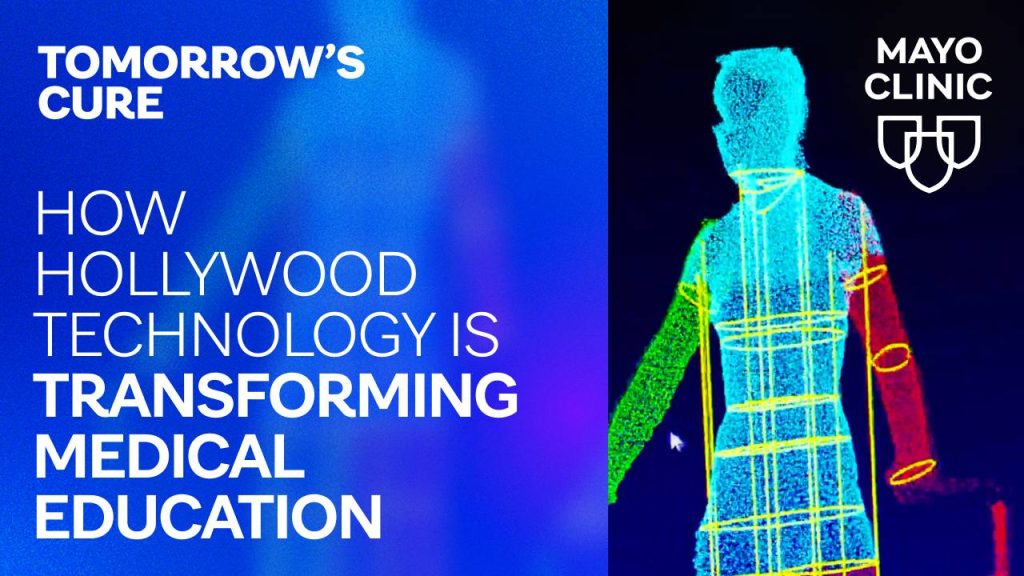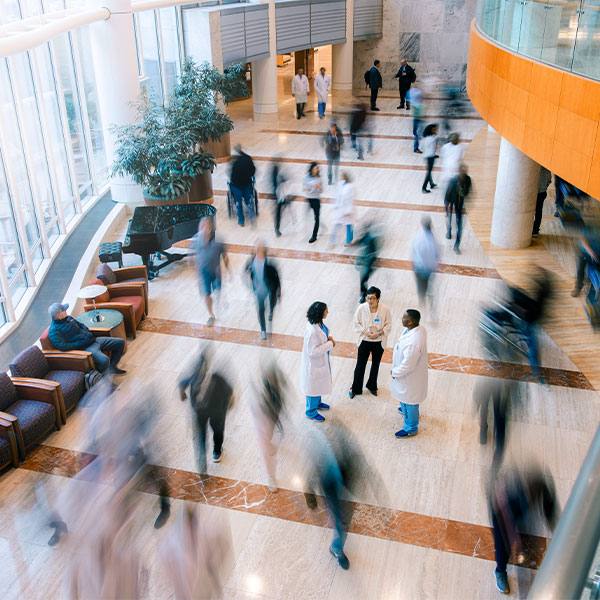-
Featured News
Tomorrow’s Cure: How Hollywood technology is transforming medical education

Hollywood's cutting-edge technology is revolutionizing medical education, bridging the gap between classroom learning and clinical practice. Through immersive digital scenarios, medical students are refining their skills and gaining hands-on experience for real-world challenges. Discover how this innovative technology is transforming medical education in a new episode of Tomorrow's Cure.
Featured experts on the podcast episode include Matthew Hoerth, M.D., medical director of the Multidisciplinary Simulation Center at Mayo Clinic in Arizona, and Dan Munnerley, executive director of the Next Lab at Arizona State University. Together, they discuss how advancements in simulation technology and the use of virtual reality are equipping students for the future.
Immersive virtual environments are advancing medical education by accurately replicating healthcare experiences, offering students a higher level of learning.
"This is not a replacement of traditional medical education. We still have requirements. Students still have to see physical people. They have to lay their hands on them. They have to actually talk to real people," says Dr. Hoerth.
"One of my rules in simulation, so to speak, is that it's a safe place, right? We make mistakes when we are simulating, when we're training — whether it's a virtual reality, mannequins, simulated patients — we can make mistakes there. It's OK. We don't want to make mistakes on patients. So, it's not a replacement; this is completely an add-on," he says.
Immersive simulations provide students with opportunities to perfect their skills, which can later be applied to patient care. This technology also makes it possible to introduce complex scenarios in a controlled environment.
"Being able to create a simulation that could be done anywhere — in a headset at home, on the bus through a mobile phone — gives students an extra chance to keep learning in between those more in-person experiences and introduce some of the more complex scenarios they might face when they need to," explains Munnerley.
Dr. Hoerth emphasizes the value of immersive learning. "Putting yourself in virtual reality, you retain so much more of that information if you've kind of lived that experience and interacted with it rather than coming at it passively," he says.
To learn more about the progressive work being done in medical education, listen to the latest episode of Tomorrow's Cure. The podcast is available on all audio platforms, including Apple Podcasts, Spotify and Amazon Music. Episodes also feature a video component, which can be viewed on Mayo Clinic's YouTube channel.







